
New cluster of yellow crazy ants found near Townsville
The discovery of yellow crazy ant clusters less than 20km from Townsville has alarmed the local taskforce battling these invasive ants.

The discovery of yellow crazy ant clusters less than 20km from Townsville has alarmed the local taskforce battling these invasive ants.

Four out of five Aussies would back environmental initiatives like tree planting, weed removal and river restoration to keep people in regional communities employed while we recover from the economic impacts of COVID-19.

Do you know an individual or organisation who deserves recognition for their work protecting Australia from environmental weeds, diseases or pest animals?
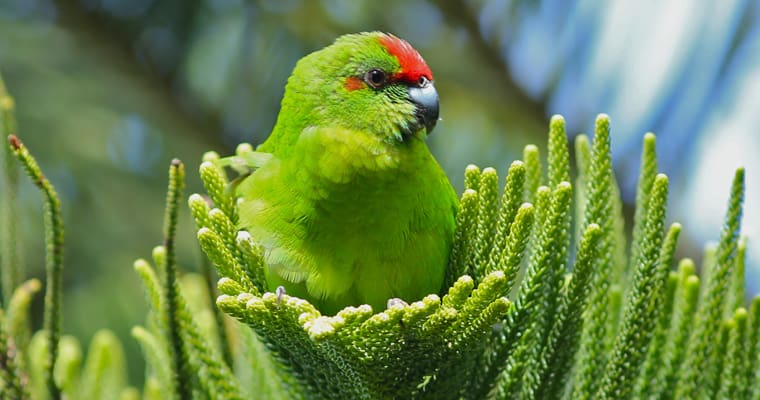
Remote Norfolk Island is a haven for wildlife found nowhere else on the planet. But the survival of many is directly threatened by invasive species.
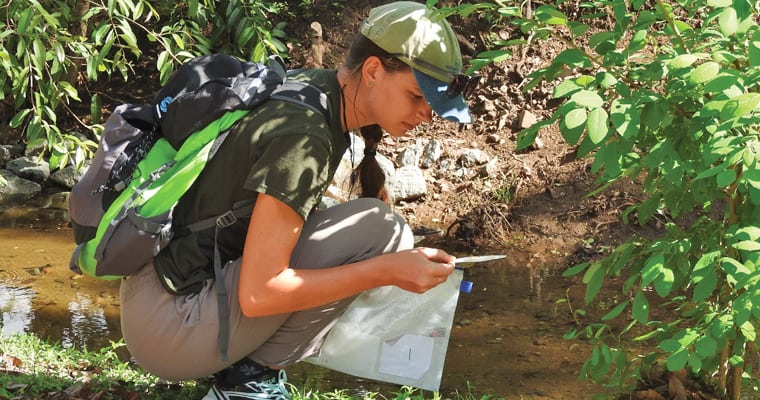
Keeping a lid on the spread of yellow crazy ants in Nome near Townsville is vital work that needs the help of the local community.
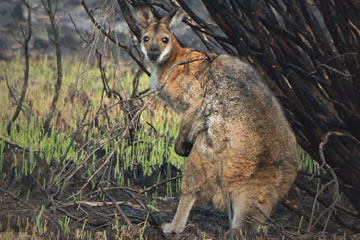
Our work is and always will be about stopping the invasion and spread of hostile weeds, pest animals and diseases that threaten our natural environment. It’s our core business.

Native species killed or stressed by climate change will all too often be replaced by weeds and feral animals or infected by exotic diseases.

Enviromental Health Australia would be a national body dedicated to environmental biosecurity and tackling Australia’s most pressing environmental threats.
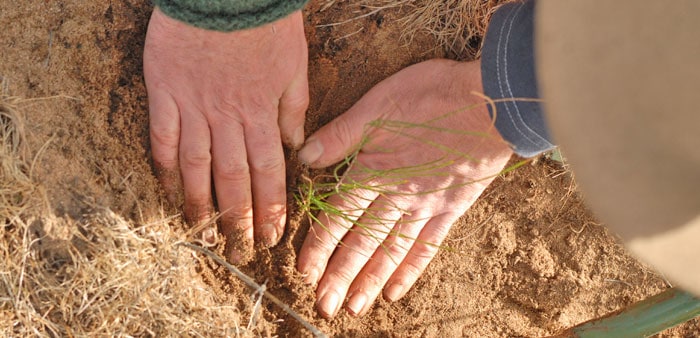
Australia has to be ready to bounce back from the coronavirus pandemic and a jobs-rich conservation and land management program could be just the ticket.
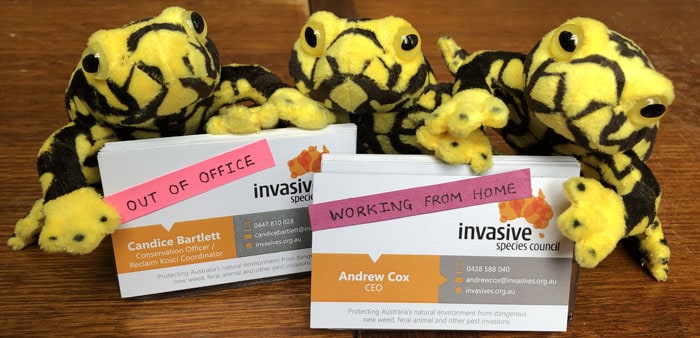
Global efforts to limit the spread of the coronavirus are disrupting everybody’s lives but, despite the challenges, we are determined to continue with our important work.
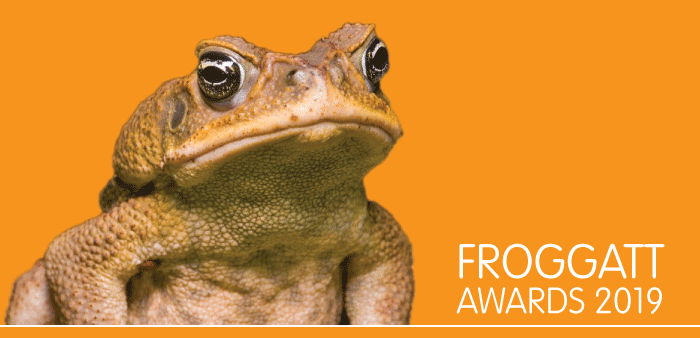
This year’s national Froggatt Awards, which are named in honour of the man who warned Australia of the dangers of releasing the cane toad into the country, have been announced.
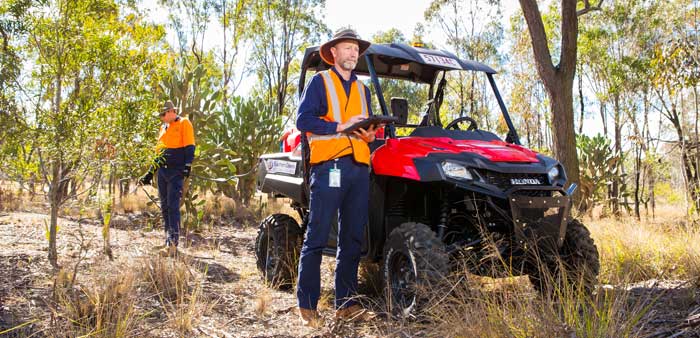
Local land owners are having a real impact in the fight against feral animals and weeds as part of a pioneering scheme run by Queensland’s Southern Downs Regional Council.
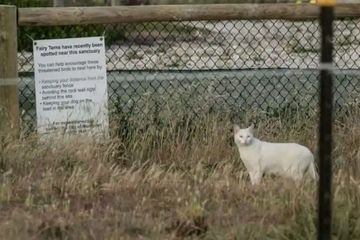
Could a single, desexed cat wipe out an entire colony of breeding fairy terns?
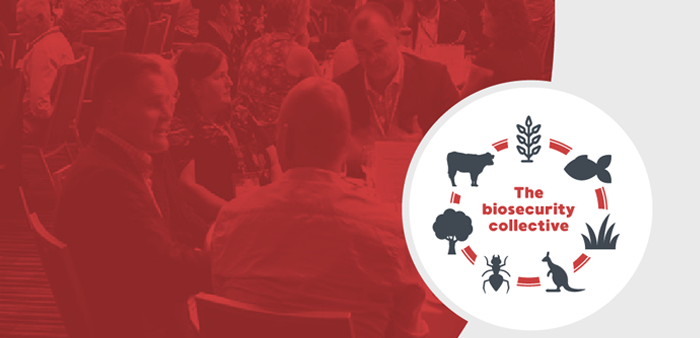
Delegates from Australia, New Zealand, the US, Canada and Mexico made first ever biosecurity symposium a smashing success.
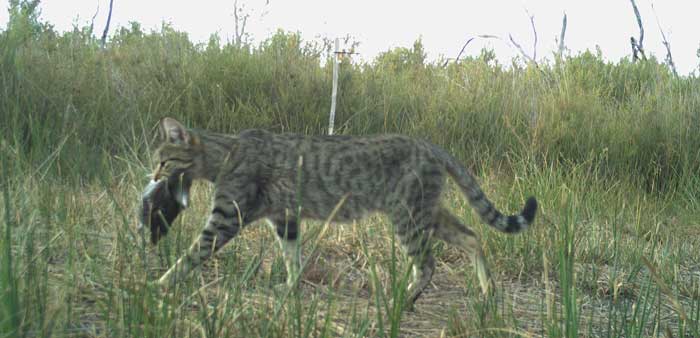
The Victorian government has an opportunity to make huge inroads into the impacts of feral cats, but it can only do so if changes are made to the regulations governing the use of traps in that state.

The discovery of yellow crazy ant clusters less than 20km from Townsville has alarmed the local taskforce battling these invasive ants.

Four out of five Aussies would back environmental initiatives like tree planting, weed removal and river restoration to keep people in regional communities employed while we recover from the economic impacts of COVID-19.

Do you know an individual or organisation who deserves recognition for their work protecting Australia from environmental weeds, diseases or pest animals?

Remote Norfolk Island is a haven for wildlife found nowhere else on the planet. But the survival of many is directly threatened by invasive species.

Keeping a lid on the spread of yellow crazy ants in Nome near Townsville is vital work that needs the help of the local community.

Our work is and always will be about stopping the invasion and spread of hostile weeds, pest animals and diseases that threaten our natural environment. It’s our core business.

Native species killed or stressed by climate change will all too often be replaced by weeds and feral animals or infected by exotic diseases.

Enviromental Health Australia would be a national body dedicated to environmental biosecurity and tackling Australia’s most pressing environmental threats.

Australia has to be ready to bounce back from the coronavirus pandemic and a jobs-rich conservation and land management program could be just the ticket.

Global efforts to limit the spread of the coronavirus are disrupting everybody’s lives but, despite the challenges, we are determined to continue with our important work.

This year’s national Froggatt Awards, which are named in honour of the man who warned Australia of the dangers of releasing the cane toad into the country, have been announced.

Local land owners are having a real impact in the fight against feral animals and weeds as part of a pioneering scheme run by Queensland’s Southern Downs Regional Council.

Could a single, desexed cat wipe out an entire colony of breeding fairy terns?

Delegates from Australia, New Zealand, the US, Canada and Mexico made first ever biosecurity symposium a smashing success.

The Victorian government has an opportunity to make huge inroads into the impacts of feral cats, but it can only do so if changes are made to the regulations governing the use of traps in that state.

The discovery of yellow crazy ant clusters less than 20km from Townsville has alarmed the local taskforce battling these invasive ants.

Four out of five Aussies would back environmental initiatives like tree planting, weed removal and river restoration to keep people in regional communities employed while we recover from the economic impacts of COVID-19.

Do you know an individual or organisation who deserves recognition for their work protecting Australia from environmental weeds, diseases or pest animals?

Remote Norfolk Island is a haven for wildlife found nowhere else on the planet. But the survival of many is directly threatened by invasive species.

Keeping a lid on the spread of yellow crazy ants in Nome near Townsville is vital work that needs the help of the local community.

Our work is and always will be about stopping the invasion and spread of hostile weeds, pest animals and diseases that threaten our natural environment. It’s our core business.

Native species killed or stressed by climate change will all too often be replaced by weeds and feral animals or infected by exotic diseases.

Enviromental Health Australia would be a national body dedicated to environmental biosecurity and tackling Australia’s most pressing environmental threats.

Australia has to be ready to bounce back from the coronavirus pandemic and a jobs-rich conservation and land management program could be just the ticket.

Global efforts to limit the spread of the coronavirus are disrupting everybody’s lives but, despite the challenges, we are determined to continue with our important work.

This year’s national Froggatt Awards, which are named in honour of the man who warned Australia of the dangers of releasing the cane toad into the country, have been announced.

Local land owners are having a real impact in the fight against feral animals and weeds as part of a pioneering scheme run by Queensland’s Southern Downs Regional Council.

Could a single, desexed cat wipe out an entire colony of breeding fairy terns?

Delegates from Australia, New Zealand, the US, Canada and Mexico made first ever biosecurity symposium a smashing success.

The Victorian government has an opportunity to make huge inroads into the impacts of feral cats, but it can only do so if changes are made to the regulations governing the use of traps in that state.
Get our blog the Feral Herald delivered to your inbox.
Our protected areas are being trashed, trampled, choked and polluted by an onslaught of invaders. Invasive species are already the overwhelming driver of our animal extinction rate, and are expected to cause 75 of the next 100 extinctions.
But you can help to turn this around and create a wildlife revival in Australia.
From numbats to night parrots, a tax-deductible donation today can help defend our wildlife against the threat of invasive weeds, predators, and diseases.
As the only national advocacy environment group dedicated to stopping this mega threat, your gift will make a big difference.
A silent crisis is unfolding across Australia. Every year, billions of native animals are hunted and killed by cats and foxes. Fire ants continue to spread and threaten human health. And the deadly strain of bird flu looms on the horizon. Your donation today will be used to put the invasive species threat in the media, make invasive species a government priority, ensure governments take rapid action to protect nature and our remarkable native wildlife from invasives-led extinction, death and destruction.
If you are having trouble submitting a form, please read this guide.
Please fill out the following form and one of our team will be in contact to assist as soon as possible. Please make sure to include any helpful information, such as the device you were using (computer, tablet or mobile phone) and if known, your browser (Mozilla Firefox, Chrome, Safari etc)
"*" indicates required fields
Dear Project Team,
[YOUR PERSONALISED MESSAGE WILL APPEAR HERE.]
I support the amendment to the Kosciuszko National Park Wild Horse Heritage Management Plan to allow our incredible National Parks staff to use aerial shooting as one method to rapidly reduce feral horse numbers. I want to see feral horse numbers urgently reduced in order to save the national park and our native wildlife that live there.
The current approach is not solving the problem. Feral horse numbers have rapidly increased in Kosciuszko National Park to around 18,000, a 30% jump in just the past 2 years. With the population so high, thousands of feral horses need to be removed annually to reduce numbers and stop our National Park becoming a horse paddock. Aerial shooting, undertaken humanely and safely by professionals using standard protocols, is the only way this can happen.
The government’s own management plan for feral horses states that ‘if undertaken in accordance with best practice, aerial shooting can have the lowest negative animal welfare impacts of all lethal control methods’.
This humane and effective practice is already used across Australia to manage hundreds of thousands of feral animals like horses, deer, pigs, and goats.
Trapping and rehoming of feral horses has been used in Kosciuszko National Park for well over a decade but has consistently failed to reduce the population, has delayed meaningful action and is expensive. There are too many feral horses in the Alps and not enough demand for rehoming for it to be relied upon for the reduction of the population.
Fertility control as a management tool is only effective for a small, geographically isolated, and accessible population of feral horses where the management outcome sought is to maintain the population at its current size. It is not a viable option to reduce the large and growing feral horse population in the vast and rugged terrain of Kosciuszko National Park.
Feral horses are trashing and trampling our sensitive alpine ecosystems and streams, causing the decline and extinction of native animals. The federal government’s Threatened Species Scientific Committee has stated that feral horses ‘may be the crucial factor that causes final extinction’ for 12 alpine species.
I recognise the sad reality that urgent and humane measures are necessary to urgently remove the horses or they will destroy the Snowies and the native wildlife that call the mountains home. I support a healthy national park where native species like the Corroboree Frog and Mountain Pygmy Possum can thrive.
Dear Project Team,
[YOUR PERSONALISED MESSAGE WILL APPEAR HERE.]
I support the amendment to the Kosciuszko National Park Wild Horse Heritage Management Plan to allow our incredible National Parks staff to use aerial shooting as one method to rapidly reduce feral horse numbers. I want to see feral horse numbers urgently reduced in order to save the national park and our native wildlife that live there.
The current approach is not solving the problem. Feral horse numbers have rapidly increased in Kosciuszko National Park to around 18,000, a 30% jump in just the past 2 years. With the population so high, thousands of feral horses need to be removed annually to reduce numbers and stop our National Park becoming a horse paddock. Aerial shooting, undertaken humanely and safely by professionals using standard protocols, is the only way this can happen.
The government’s own management plan for feral horses states that ‘if undertaken in accordance with best practice, aerial shooting can have the lowest negative animal welfare impacts of all lethal control methods’.
This humane and effective practice is already used across Australia to manage hundreds of thousands of feral animals like horses, deer, pigs, and goats.
Trapping and rehoming of feral horses has been used in Kosciuszko National Park for well over a decade but has consistently failed to reduce the population, has delayed meaningful action and is expensive. There are too many feral horses in the Alps and not enough demand for rehoming for it to be relied upon for the reduction of the population.
Fertility control as a management tool is only effective for a small, geographically isolated, and accessible population of feral horses where the management outcome sought is to maintain the population at its current size. It is not a viable option to reduce the large and growing feral horse population in the vast and rugged terrain of Kosciuszko National Park.
Feral horses are trashing and trampling our sensitive alpine ecosystems and streams, causing the decline and extinction of native animals. The federal government’s Threatened Species Scientific Committee has stated that feral horses ‘may be the crucial factor that causes final extinction’ for 12 alpine species.
I recognise the sad reality that urgent and humane measures are necessary to urgently remove the horses or they will destroy the Snowies and the native wildlife that call the mountains home. I support a healthy national park where native species like the Corroboree Frog and Mountain Pygmy Possum can thrive.